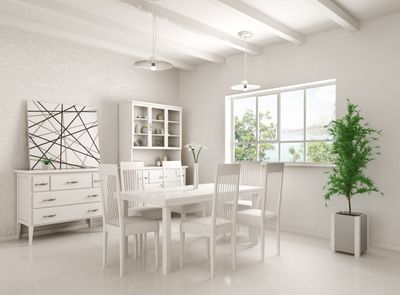Suggested Plants for the Dining Room
Here are a few tips for selecting and growing plants in the dining room. Cactus plants or succulents are ideal if you have plenty of bright light. Consider the location carefully, however, when it comes to prickly or thorny cacti and be sure to keep them out of reach of children. Water cacti and succulents whenever the fleshy leaves begin to look wilted – usually about once a month (and probably less during the winter). With their beautiful, variegated leaves, begonias make excellent dining room houseplants. Although begonias adapt to a variety of light conditions, they thrive in bright, indirect light. One watering per week is generally adequate, but plants in brighter light may need more frequent irrigation. Philodendron – either climbing or non-climbing – is an impressive, easy-to-grow plant that thrives in low light or slightly shady areas in your dining room. Water regularly but allow the soil to dry slightly between watering; over or underwatering may cause the leaves to turn yellow and drop off the plant. Philodendron may not be a good choice if your dining room regularly falls below 55 degrees F. (13 C.). Snake plant (Sansevieria), also known as mother-in-law’s tongue, may be too tall for the table, but it’s a fantastic focal point for a dining room. Snake plant is a tough plant that can tolerate a lot of neglect, but overwatering is usually to blame when snake plants fail to thrive. Water snake plant lightly, especially during winter or if your dining room is air conditioned. If conditions are just right, you may see some slender, spiky blooms. If you’re looking for colorful plants in the dining room, bird of paradise may be just the thing. This splashy, tropical plant is a good pick if you have a lot of bright sunlight, although a window in bright afternoon sunlight may be a little too intense. Ensure temps in your dining room are consistently above 60 degrees F. (16 C.). Keep the soil consistently moist. These are just a handful of plants that work well in the home. There are many others that would do equally as well in your dining area. Just be sure to research the plant carefully beforehand to ensure your room provides adequate lighting.
